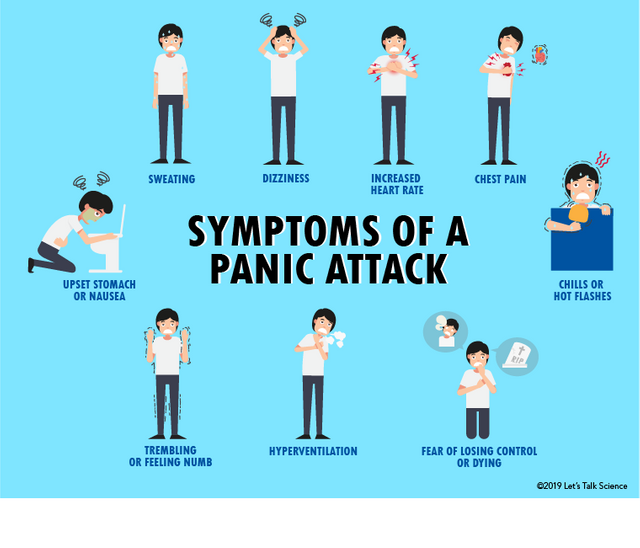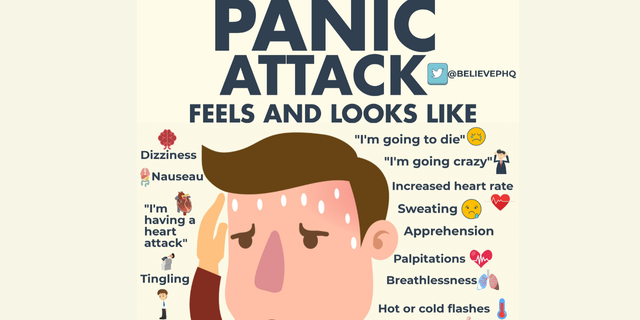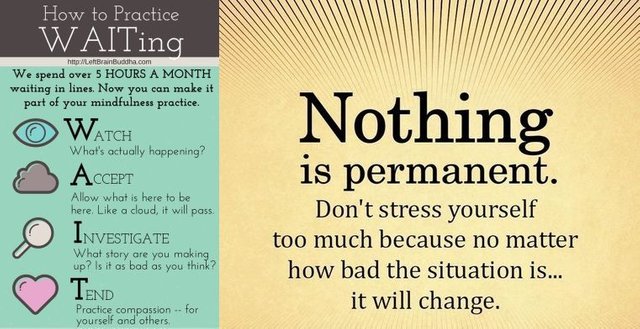Thou Shall Not Fear | Reduce Fear, Panic and Anxiety Disorders
If you search the term "What to do about panic attacks?" countless tips appear, such as call a friend, drink lots of water and do breathing exercises. These are helpful strategies for making a panic attack as comfortable as possible. Distraction, safety behavior, avoidance and escape seem to be effective methods, but it is precisely these behaviors that sustain fear and panic in the long term.
Fear primarily links stimuli with one another and thus learns from experience. Unfortunately, this is not a particularly rational approach. For example, if you have a panic attack while sitting on a bus, these two stimuli can be linked. So your fear has learned from this experience. Driving the bus means panic. Since your fear only means well to you and wants to protect you, it saves taking the bus as dangerous and thus triggers fear the next time you take the bus so that you can get to safety. This is called classical conditioning in psychology.
If a certain consequence follows a certain behavior, your fear also derives a learning experience. This is called operant conditioning. So if you avoid taking the bus from now on or flee as soon as you feel uncomfortable, the consequence of this is that you will not get a panic attack. This experience solidifies your fear's belief that it absolutely must continue to protect you from the bus. This appears first of all advantageous since no anxiety or panic avoidance or escape. However, this robs your fear of a corrective experience. In other words, the experience that nothing bad happens when traveling by bus tells that there is no reason to be afraid.
The same principle applies to distraction and safety behavior. If you always have something to drink or medication with you when driving the bus, if a friend calls him or you do breathing exercises, your anxiety incorrectly learns that it needs these aids to avert fear. You become dependent on your resources. If you do not have this available, the fear builds up again. In addition, distraction ensures that your fear in the situation lasts much longer.
The good news is what has been learned can also be unlearned or relearned again through corrective experience. Unfortunately, this does not happen overnight, but requires time and active confrontation exercises.
Corrective experiences and exposure exercises
If you want to cross items off your fear list, the following principle applies, wait and do nothing. In a confrontation, you put yourself specifically into a fear-inducing situation and remain in it until your fear has calmed down on its own, without distraction and safety behavior. You can imagine your fear a bit like a child having a tantrum. Above all, it helps to wait and do nothing. Let the panic let off steam and wait until it gets tired all by itself.
If your fear now increasingly experiences that the panic subsides on its own and there is no concrete danger in the confrontation situation, the process of habituation begins. Your fear learns from these corrective experiences. I have nothing to fear.
What are anxiety disorders?
Everyone is scared and that's just as well because it guides us safely through our everyday life by repeatedly drawing our attention to smaller and larger dangers in our environment and ensuring that we react accordingly. Whether we buckle up in the car, hold on to the railing, shy away from a speeding bicycle or a bee, or stay in the house during a thunderstorm. The fact that we are afraid, in most cases, keeps us safe. However, if a real, external threat is missing, the fears become stronger, more frequent, longer-lasting and uncontrollable, one speaks of an anxiety disorder.
In psychology, a distinction is made between the following anxiety disorders: There are those without a specific trigger, such as panic disorder and generalized anxiety disorder, and those with specific triggers, these can be recognized by the word ending - phobia (s): agoraphobia, social phobias and specific phobias .
Panic disorder
With panic disorder, those affected suffer from recurring panic attacks with pronounced physical and psychological symptoms. The attacks are not linked to a specific situation or circumstances and therefore do not occur in a predictable manner. Those affected mostly live in fear of the next panic attack. A vicious circle of fear of fear arises. In addition, there are fears of being critically ill or going crazy.
Symptoms of Panic?
- Chest pain or discomfort
- Palpitations
- Dizziness or lightheadedness
- Nausea
- Fear of dying
- Feelings of unreality
- Numbness or tingling sensation
- Feeling detached from the body
- Shaky legs
- Shortness of breath
- Sweat
- Tremble
- Fear of losing control
- Stomach problems
If at least four of the above symptoms occur together and there are no physical illnesses, conclusions can be drawn about a panic attack.
Often times, people start avoiding situations and places they had a panic attack in or certain activities that they associate with it. This avoidance behavior can enormously restrict everyday life and result in another anxiety disorder: panic disorder with agoraphobia.
Agoraphobia
Agoraphobia is an anxiety disorder in which fear and panic are triggered by certain situations and places, such as shops, cinemas, elevators, crowds, public places or means of transport. Anxiety-ridden environments can cause panic symptoms and are therefore strongly avoided. At the forefront is the fear of being able to escape and or receiving help with difficulty in an emergency. In extreme cases, those affected can no longer leave their own apartment.
Social phobias
People with social phobia are very afraid of a negative assessment of others, of embarrassing themselves or of being perceived as strange. They feel ashamed of their own behavior and visible fear reactions. Thus there is a fear of social situations and interactions in which they are the center of attention. These situations are avoided as far as possible or only confronted with great fear or even panic attacks. Even in retrospect, those affected ponder the situation for a long time and fear that they have been noticed or assessed unpleasantly. This severely restricts social life. Affected people often have problems finding partners and friends, live socially isolated and cannot fully develop their professional potential.
Generalized Anxiety Disorder
Those affected by this disorder suffers from persistent and diffuse fears, anxiety and physical tension. Fears often relate to everyday and financial events and problems, but in particular also concerns about the fact that you or your loved ones could fall seriously ill or have an accident. The worries are perceived as hardly or not at all controllable and very stressful. In addition to panic symptoms, there can also be symptoms such as restlessness, gastrointestinal complaints, concentration problems, irritability, sleep disorders and cardiovascular problems.
Isolated phobias
In the case of a isolated phobia, those affected are very afraid of specific objects or situations. Social, everyday and professional aspects of life are considerably restricted.
Often there are fears of animals (like spiders, dogs), forces of nature (like thunderstorms, bodies of water), injuries (such as syringes, blood) or situations (for instance fear of flying, fear of heights, tunnels).
Affected people avoid feared objects or situations or endure them only with strong fears. In addition, they are aware that the object or situation does not pose any specific danger and that the strong fear reaction is disproportionate.
Reference:
Verywellmind
Health Line
Psychology Today






